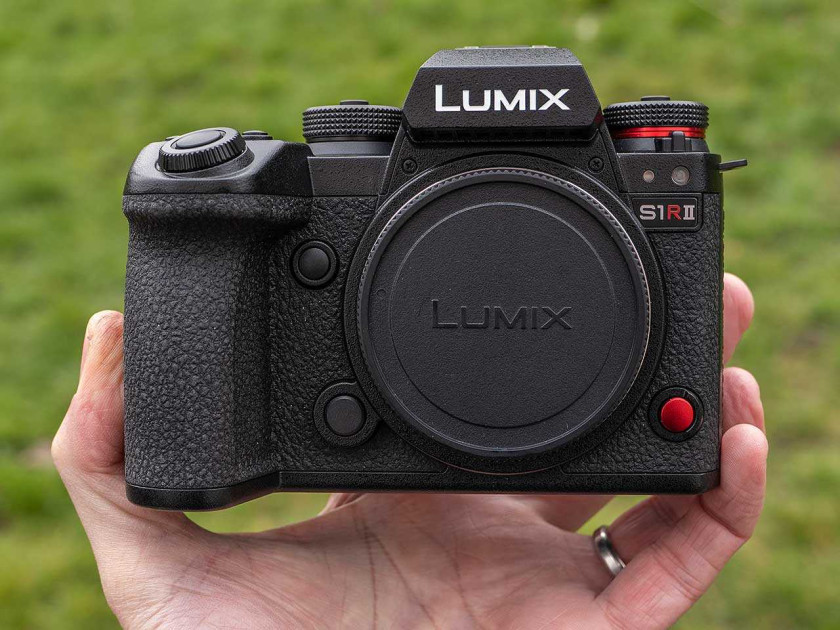
Introduction
The S1R II is the new flagship model in the Panasonic Lumix range of full-frame mirrorless cameras. This is a hybrid photo and video camera that provides 44 megapixel photos and 8K video.
It replaces the original Lumix S1R that was released way back in 2019, which was much more of a stills-focused model. By contrast, the Mark II is positioned as a more all-round hybrid camera with features designed to appeal to both photographers and videographers alike.
The Lumix S1R II joins the more affordable S5 II as the smallest and lightest model in Panasonic’s range of full-frame mirrorless cameras, with both sharing a near identical body and control layout.
Consequently it’s much smaller than the previous generation S1, S1R and S1H full-frame cameras and is actually about the same size as the GH6 model, which has a comparatively tiny Micro Four Thirds sensor.
The Panasonic S1R II features a newly developed sensor that once again supports Hybrid Phase Detection Auto-Focus, following on from the S5 II and S9. All previous Lumix full-frame cameras before these three models used an inferior contrast-based AF system.
It offers 44.3 effective megapixels from its 45.9 megapixel full frame sensor, an expanded ISO range of 40-102400, the latest Venus image processing engine, a free-angle 3.0-inch touchscreen LCD with 1.84m-dot resolution, and a 5.76m-dot, 0.78x magnification OLED viewfinder.
The S1R II is the first Lumix camera to offer 8K 30p video recording with 14 stops of dynamic range. It also features 4K 120p recording with just a small 1.1x crop.
The Open Gate format has been enhanced, allowing you to shoot in 6.4K, and even up to 8.1K / 7.2K with a future firmware update.
It also supports 5.8K Apple ProRes RAW HQ / ProRes RAW internal recording to a CFexpress Type B card for the first time on a full-frame Lumix camera.
Other key features of the Panasonic Lumix S1R II include an 8-stop Dual Image Stabilizer, 10fps continuous shooting with the mechanical shutter and 40fps with the electronic shutter, and the the High Resolution mode, which allows the Panasonic S1R II to capture 177-megapixel equivalent photos by rapidly taking 8 separate images and combining them into one.
The weatherproof Lumix S1R II has a thumb-controlled AF joystick on the rear, one UHS-II SD and one XQD / CFexpress memory card slot, Bluetooth 5.0 and 5GHz/2.4GHz Wi-Fi connectivity, and USB Type-C charging.
The Panasonic Lumix S1R II is available now priced at £2,999 / €3,599 / $3,499 body-only in the UK, Europe and USA respectively, or £3,799 / €4,499 with the Lumix S 24-105mm MACRO F4 O.I.S. kit lens.
Ease of Use
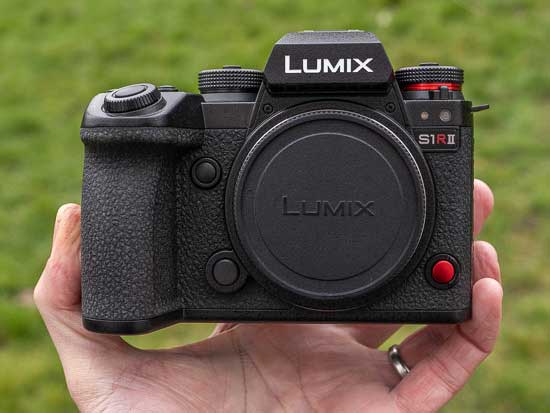 |
The S1R II is designed to be the ultimate all-round powerhouse in the Lumix range, at an aggressive price-point that significantly undercuts all of its main rivals.
Although Panasonic haven’t officially said so, it effectively replaces the S1H and S1R models that date back to 2019, amalgamating them into one camera that is powerful enough to take on the likes of the Nikon Z8, Canon EOS R5 Mark II and the Sony A1 II.
The S1R II measures 134.3 x 102.3 x 91.8mm and weighs in at 712g / 1.57 lb body only, which is much smaller and lighter than its direct predecessor. The original S1R was one of the largest and heaviest mirrorless cameras on the market, measuring 148.9 x 110.0 x 96.7mm and weighing 898g body only.
Panasonic have achieved this by essentially reusing the design of the Lumix S5 II, presumably standardizing on one chassis to make the camera smaller for end users and also cheaper to produce.
So if you’re an S5 II owner looking to upgrade to more megapixels and even better video, you’ll very quickly get up to speed using the new S1R II.
This does mean that the the large status LCD on top of the S1R which was useful for quickly checking the camera’s key settings has been removed on the newer model as there’s simply no room to accommodate it, one of the few concessions of this new model compared to its predecessor.
On the other hand, if you have been considering the Lumix S-series but were put off by the relatively large size of the flagship S1 bodies, then the S1R II is definitely small and light enough to warrant a second look at the range.
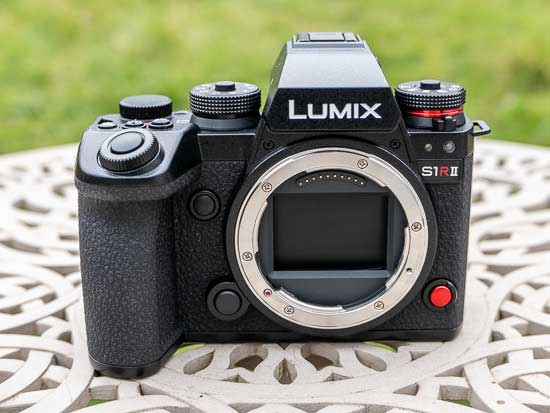 |
The new Panasonic S1R II has the same tank-like build quality and weather-proof exterior shared by all of the other Lumix S-series cameras. Its magnesium alloy full die-cast dust and splash-proof body has all of its main seams tightly sealed against moisture ingress.
As you’d expect of a flagship camera, the S1R II is fully weather-sealed and splash/dust-proof and freeze-proof down to -10 degrees Celsius (the S5 II only goes down to 0 degrees Celsius).
The Panasonic S1R had one of the best, if not the best, electronic viewfinders that we ever had the pleasure of using, and happily the new S1R II continues to use exactly the same viewfinder as the original model.
The OLED unit has a resolution of 5.76-million-dots, offers 100% field of view, and a magnification ratio of 0.78x with a 50mm lens at infinity. It operates at a native rate of 120fps with a minimum lag of less than 0.005 sec, which helps to make it completely flicker-free.
The new S1R II uses the same 3.0-inch, 1.84 million dot vari-angle LCD screen as the S5 II model, which offers slightly less resolution than the original S1R but a lot more versatility.
This can be tilted all the way out to the side of the camera, turned forwards for selfies and vlogging, and turned towards the back of the camera to help protect it when the camera isn’t being used. It’s very useful as an aid to shooting video as well as more unusual compositions when you can’t always get an eye flush to the viewfinder.
You can also freely rotate the monitor while a cable is still plugged in to one of the four ports on the side of the camera, making video production even easier.
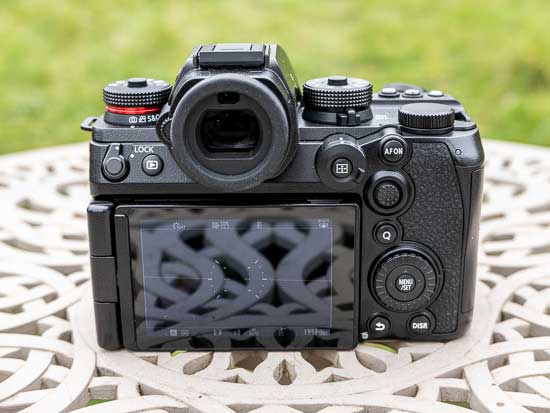 |
The S1R II has the best in-body image stabilization system of any Lumix full-frame camera, offering 8 stops in the centre and 7 stops at the edges of the frame and 7.0-stops even in the telephoto range with Dual I.S.2.
There’s an Active I.S. mode which provides highly stable video recording by optimising horizontal, vertical and rotational correction. This is especially effective in traditionally challenging conditions for handheld shooting, such as using telephoto lenses or filming while walking.
There’s also a newly developed cropless E.I.S. video distortion correction option which helps stabilizes video footage without cropping the angle of view, although this feature only works with a few wide-angle lenses that can apply in-camera corrections.
There are two memory card slots, with the S1R II utilising one UHS-II SD slot and one XQD / CFexpress slot housed in a dedicated compartment on the side of the body.
The S1R II offers up to 280-shot battery life when using the Live Viewfinder and 350-shots when using the rear LCD screen, slightly worse than the original, increasing to 1,100 shots using the Power Save LVF mode.
The original Lumix S1R used a 47.3MP full-frame CMOS sensor with no low pass filter to help maximize overall resolution, while the S1R II features a newly developed 44.3MP BSI CMOS sensor that offers slightly less resolution but supports faster continuous shooting speeds and better video. Both models use the Venus image processing engine.
The S1R II has a special High Resolution mode which captures 177-megapixel equivalent photos by rapidly taking 8 separate images and combining them into one.
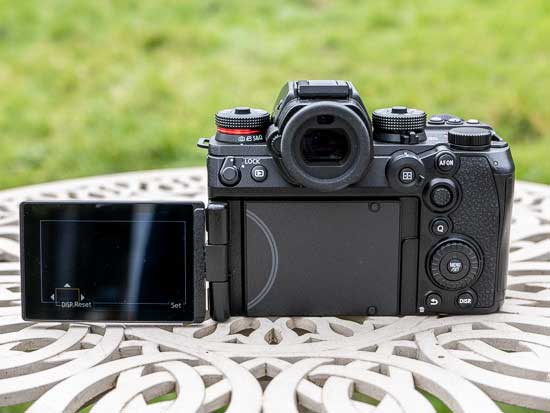 |
This mode no longer requires the camera to be mounted on a tripod or other stable surface to ensure sufficient sharpness. The newer S1R II can additionally capture its high resolution images whilst hand-holding the camera even at the full 177-megapixel resolution, which makes it a lot more versatile than its predecessor, although it’s still best suited to non-moving subjects.
The S1R II has an expanded ISO range of 40-102400 which is one stop better at either end than the S1R.
Dual Native ISO is a new feature on the S1R II that is borrowed directly from the S1H and Panasonic’s broadcast line of video cameras. This automatically switches between native ISO settings of 80 and 400 without increasing noise by changing the way the camera reads out the image sensor.
You can manually switch between the LOW and HIGH settings or choose Auto and rely on the camera to do so at various ISO levels.
As you’d expect of a flagship camera launched in 2025, unlike its 6-year-old predecessor the new S1R II has a hybrid contrast and phase-detection auto-focus system with AI tracking that quickly and precisely detects human eyes and faces and follows a subject’s movements smoothly.
Offering fast and dependable 779-area metering, the new system is able to detect target subjects in difficult conditions such as low light and backlighting and, once locked on, will remain tracking them even with other moving objects in the frame.
Sadly, there’s no Automatic Detection option that can be turned on to seamlessly switch between Human / Animal / Car / Motorcycle/Bike / Train / Airplane as on some rival models, so you still have to dive into the main menu system. Autofocus works in low light all the way down to -6 EV with the 50mm F1.4 lens fitted.
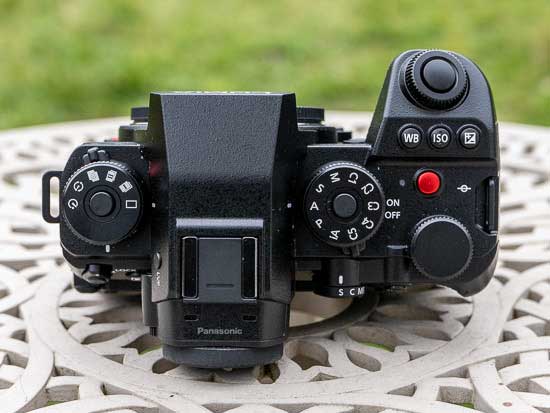 |
The S1R II offers blackout-free high-speed burst shooting rates at up to 40fps with the electronic shutter “SH” mode, and an extended continuous shooting “H+ (High Speed Plus)” mode of approximately 10fps with the mechanical shutter, both with full-time AF/AE tracking.
The SH pre-burst mode even starts taking pictures before the shutter is fully pressed, ensuring you never miss a shot. It can shoot stills at 1/16,000sec in the Electronic Shutter Speed Priority mode and video at up to 1/10,000sec.
The original S1R featured 4K video recording at up to 60/50p in 4:2:0 8-bit quality with a 1.09x crop of the full frame sensor. The S1R II ups the ante significantly by being the first Lumix camera to offer 8K 30p video recording with 14 stops of dynamic range. It also features 4K 120p recording without any crop.
The popular Open Gate format has been enhanced, allowing you to shoot in 6.4K, and even up to 8.1K / 7.2K with a future firmware update.
It also supports 5.8K Apple ProRes RAW HQ / ProRes RAW internal recording to a CFexpress Type B card for the first time on a full-frame Lumix camera. You can record to an external SSD via USB-C.
The S1RII is compatible with the LUMIX Lab smart phone application, enabling you to load LUTs directly into the camera.
A new LUMIX Flow app will be launched to enhance production workflows across various scenarios, such as short films, documentaries, music videos, and corporate promotional
videos. This app offers a range of features, from storyboard creation and shooting to file organization.
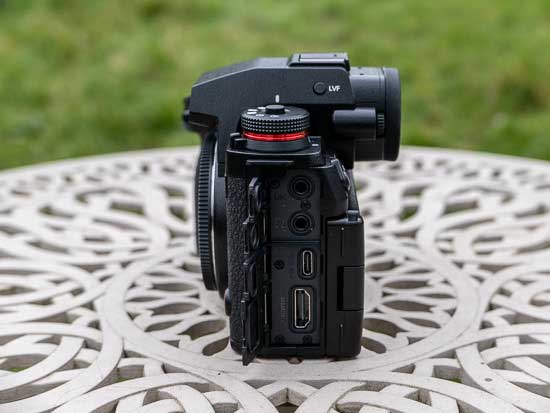 |
For the first time in Lumix history, the S1R II supports tethering via Capture One, assisting various creators across various production scenarios.
Now let’s take a tour of the S1R II’s body and external control layout.
Starting at the front of the Lumix S1R II, the wide L lens mount dominates proceedings, along with a hand grip that, while narrower than those typically found on a semi pro DSLR, nevertheless feels just right for the S1R II’s own shape and build, enabling the camera to be operated with just one hand.
With the lower three fingers of your right hand curled around the S1R II’s grip, your forefinger is free to alternate between rotating the front control dial that sits slightly proud of the grip at its topper-most edge, and the slightly raised and angled shutter release button just atop it, which is responsively springy.
Sitting just behind these controls are three small raised buttons. From left to right, these are for manually adjusting white balance, light sensitivity and exposure settings. The Panasonic S1R II’s layout feels ergonomic and its operation – particularly of such key and regularly used features – well thought through.
Unlike the previous S1R, there’s no top-plate LCD screen on the new Lumix S1R II. Instead the large shooting mode dial has been moved from top-left on the S1R to top-right on the S1R II, and there’s a Burst/Bracketing Shooting dial in its former position.
This smaller but still chunky, roughly ridged and raised dial over at the left hand edge of the camera has 6 different settings, which variously provide quick access to the self-timer, time-lapse, high resolution, burst shooting (2 modes) and normal single shooting modes.
Underneath the dial is a shiny red ring, just like on the S1-series cameras, which has perhaps been deployed to lend the cameras a more professional air.
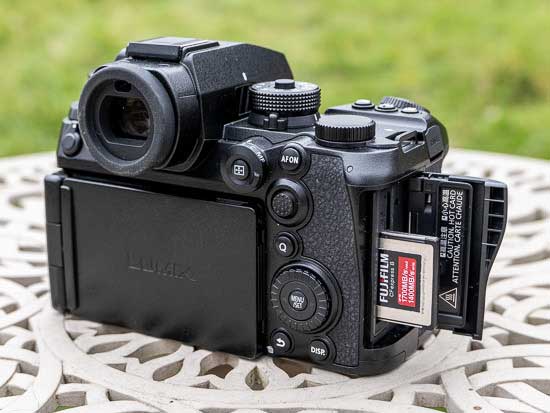 |
Underneath that again is a brand new dial for quickly switching between the Stills, Video and Slow and Quick modes, which is a great addition that we wish Panasonic had also adopted on the S5 II.
Stereo microphones and a vacant hotshoe for an accessory flash are slotted directly on top of the EVF. There’s no built-in pop up flash on the Panasonic S1R II, which is probably to be expected on a flagship camera.
The chunky, roughly ridged and raised shooting mode dial over on the top-right makes it easy to adjust settings ranging from Intelligent Auto focus to program, shutter priority, aperture priority or manual pretty quickly. On the same dial we also get no fewer than four custom modes that work for both stills and video.
The on/of switch is more of an actual lever which sits underneath the shooting mode dial, another slight point of difference to the S5 II. This is quite stiff in operation – you almost have to force it – which, to give it a positive spin, means this is a camera that is almost impossible to accidentally activate or deactivate.
Flick this lever to on and the camera is ready to take the first shot just as quickly as your finger can move from it to the shutter release button just in front. There’s no waiting around with the S1R II – it’s ready when you are.
The control dial at the front of the handgrip is mirrored by one the size of a five pence piece that sits on the top plate at the back. Here it readily (and again, ergonomically) falls under the thumb of the right hand; thereby continuing to give the impression that the layout has been well thought through.
Completing the S1R II’s top-plate is a one-touch movie record button, finished in the same metallic dark red as the ring which sits underneath the drive mode dial. Just like the shutter release button, again this has a nice springy feel to it that makes it easier to locate and activate.
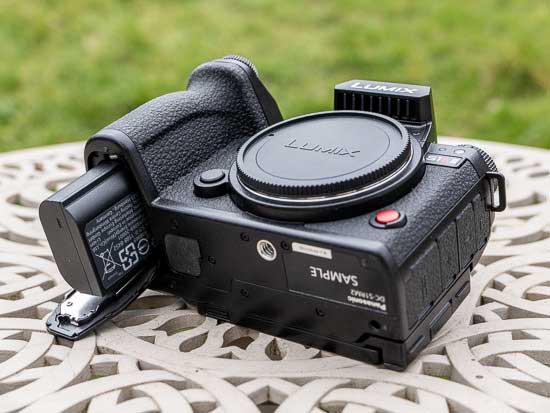 |
With chunky lugs for attaching the shoulder strap provided out of the box to be found left and right of the camera, the right-hand flank provides a port protected by a sliding switch that allows for the insertion of two memory cards, one UHS-II SD slot and one XQD / CFexpress slot.
The four individual ports on the left-hand flank provide a means of connecting an accessory microphone and headphones, plus USB-C and full-size HDMI leads, the latter a notable upgrade from the original S1R.
The rubberized flaps protecting these feel a little flimsier than the rest of the camera, and time will tell whether these become worn and stop adhering so precisely over time.
Moving to the rear of the Panasonic S1R II, again this is button festooned without feeling over-bearingly so.
The top-left of the back of the camera is where we find the playback button for reviewing stills and video, along with a new Lock switch that prevents the current camera configuration from being inadvertently changed.
There’s a small, dedicated LVF button on the side of the pentaprism for manually switching between the rear LCD screen and the EVF, which perhaps feels a little redundant given that the camera automatically switches to the EVF when you hold the camera up to your eye (this setting can be turned on and off as desired).
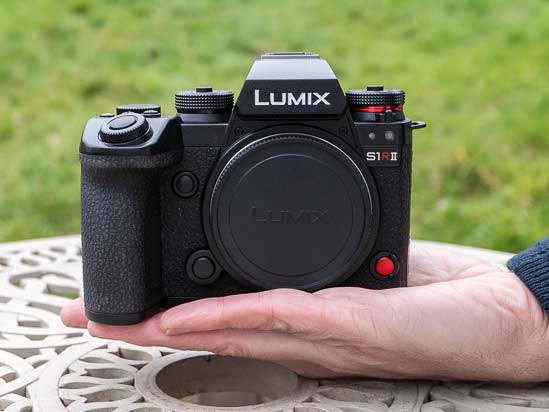 |
Directly to the right of the EVF is a tactile circular switch for changing the auto-focus mode from single to continuous to manual focus, into which is set the AF area button for selecting one of the seven available AF modes. You can choose from Tracking, Full Area, Zone (Horizontal/Vertical), Zone, 1-Area+, 1-Area and Pinpoint.
Along with the afore-mentioned 8-way AF joystick, the small AF On which can be used for back-focusing completes the S1R II’s very handily-placed collection of focusing controls.
This being a Panasonic camera, we’re provided with the very useful Quick menu short cut button – located via the button marked with an enigmatic ‘Q’ situated to the right of the LCD – which gives completely customizable quick access to 12 of the camera’s key settings.
Menu/Set, Display and a shared delete/back button are also to be found at the rear of the S1R II, along with a familiar multi-directional control pad, encircled by a scroll wheel for maximum fluidity of operation.
The menu screens are comprehensively featured but pleasingly legible and intuitively navigated. That said, it was also nice to have the configurable Quick menu feature in order to circumnavigate them when we wanted to get to the relevant setting swiftly.
At the base of the camera we find a single screw thread for attaching the S1R II to a tripod, located directly in line with the central point of the lens mount.
Image Quality
All of the sample images in this review were taken using the 44.3 megapixel Fine JPEG setting, which gives an average image size of around 18Mb.
The Panasonic Lumix S1R II produced still images of outstanding quality during the review period.
This camera produces noise-free JPEG images from ISO 40 all the way up to ISO 6400, with significant noise first appearing at ISO 12800. The faster settings of 25600 and 51200 display quite a lot of noise, but they’re still fine to use for making smaller prints and web images. You should avoid using the expanded ISO 102400 setting if possible.
The High Resolution Mode is capable of creating 177 megapixel images, while the various Photo Styles and Filters allow you to quickly and easily customise the look of the camera’s JPEG and Raw images before you take them.
Noise
The expanded ISO sensitivity can be set between ISO 40 and ISO 102400 in full-stop increments. Here are some 100% crops which show the noise levels for each ISO setting, with JPEG on the left and RAW on the right.
File Quality
The Panasonic Lumix S1R II has 2 different JPEG image quality settings available, with Fine being the highest quality option. Here are some 100% crops which show the quality of the various options, with the file size shown in brackets.
| Fine (15.4Mb) (100% Crop) | Standard (6Mb) (100% Crop) |
 |
 |
| RAW (51.1Mb) (100% Crop) | |
 |
Photo Styles
Panasonic’s Photo Styles are preset combinations of different sharpness, contrast, saturation and noise reduction settings. The available Photo Styles are shown below in the following series, which demonstrates the differences. There are also six Custom options so that you can create your own looks.
Filter Effects
The Panasonic Lumix GH6 offers a range of digital filter effects that can be applied to both JPEG and Raw files, with 8 different options available in the main menu.
Sample Images
This is a selection of sample images from the Panasonic Lumix S1R II camera, which were all taken using the 44.3 megapixel Fine setting. The thumbnails below link to the full-sized versions, which have not been altered in any way.
Sample RAW Images
The Lumix S1R II enables users to capture RAW and JPEG format files. We’ve provided some Panasonic RAW (RW2) samples for you to download (thumbnail images shown below are not 100% representative).
Sample Movies & Video
As of February 2025, we are no longer providing full size sample images or videos for download.
Please contact us if you have any feedback on our new policy.
Product Images


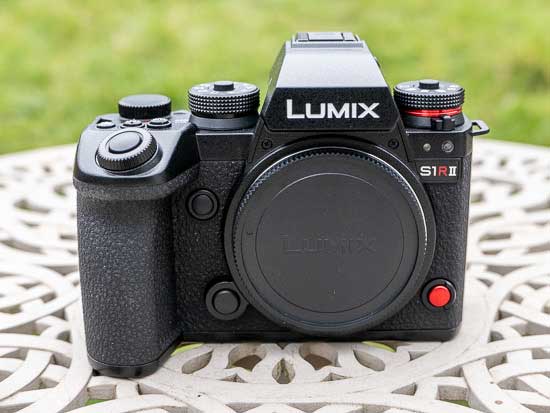

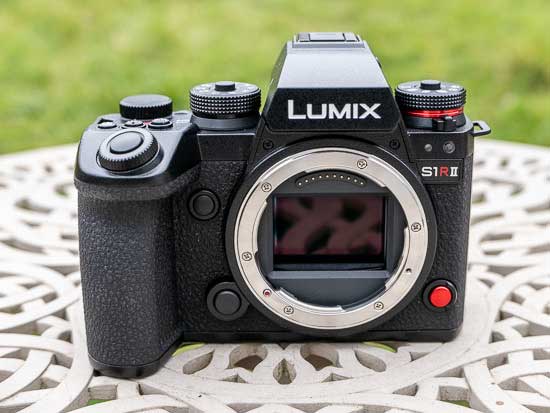
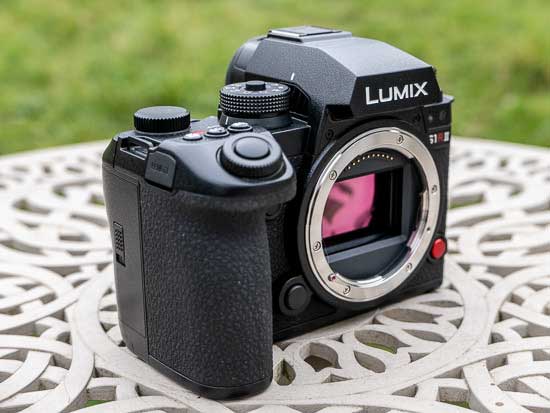
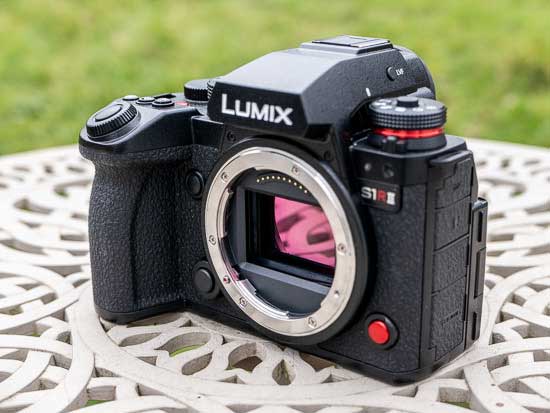
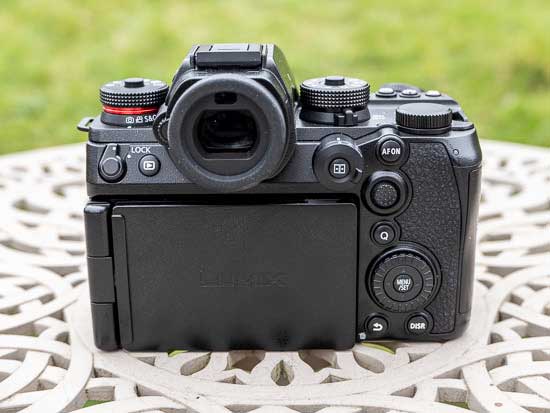

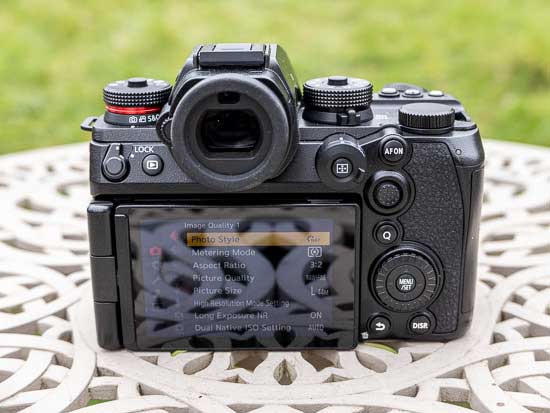
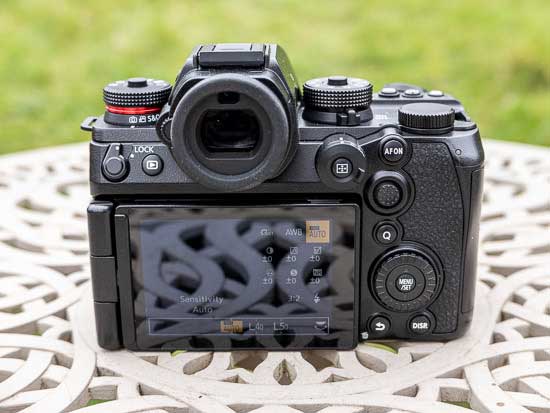

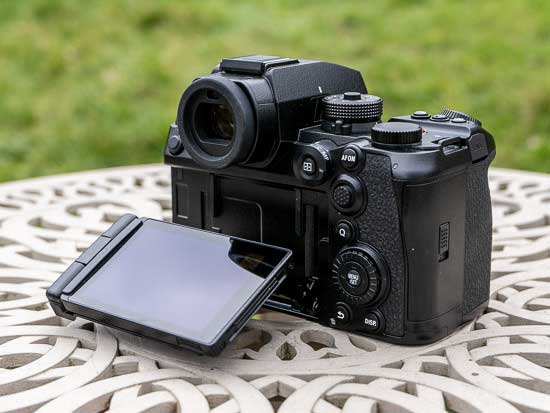
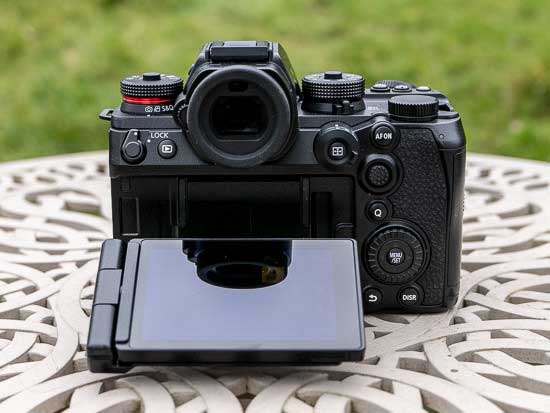
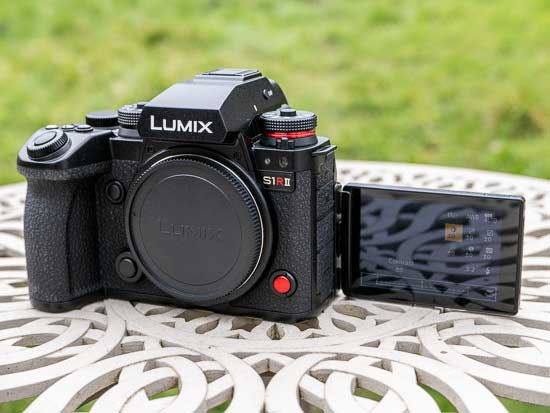
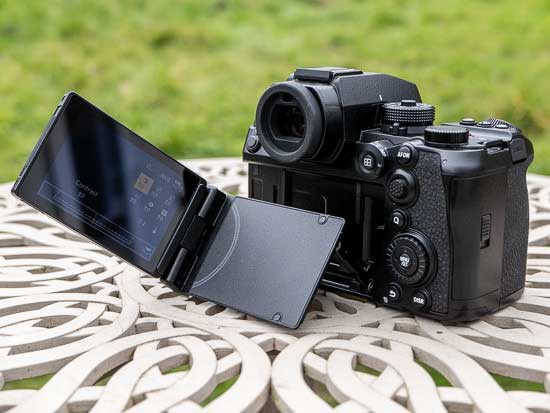

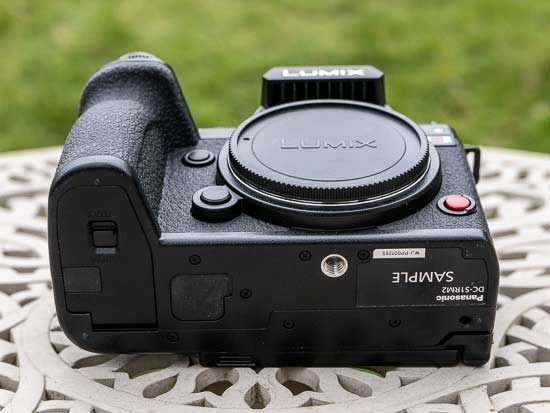
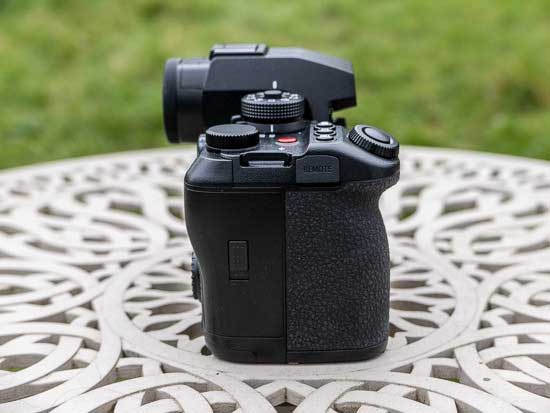
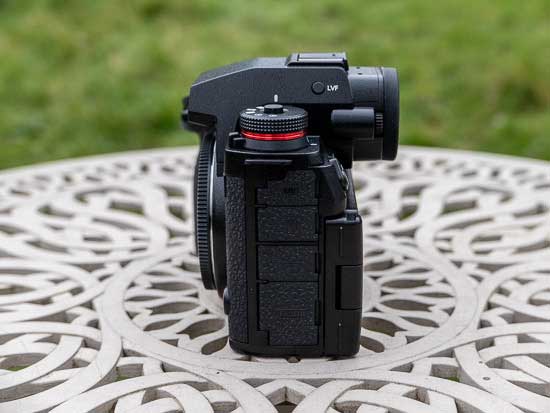



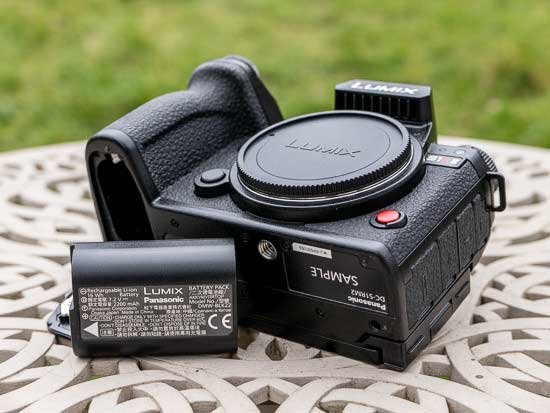
Conclusion
The new S1R II is the most powerful all-round Lumix camera to date, delivering a stunning blend of cutting-edge video and photo features and performance at a price that seriously undercuts its main rivals.
With 8K/30p, 6.4K open-gate and 4K/120p video on-board and Panasonic’s usual plethora of video options for serious videographers, this is the most accomplished full-frame video Lumix camera ever.
For the majority of users recording for social media, the already very capable S5 II / S5 IIX will more than meet their video needs, but if you really do need 8K or 4K/60p recording, then the new S1R II is worth aspiring to.
On the stills side, the jump to a new 44 megapixel sensor from the S5 II’s 24 megapixels brings much greater resolution without any sacrifices in shooting speed. Indeed, the S1R II surpasses previous models with its 40/10fps electronic/manual shutter shooting prowess, making it an excellent choice for action and wildlife photography.
This assertion is supported by the excellent hybrid contrast and phase-detection auto-focus system with AI tracking that quickly and precisely detects human eyes and faces and follows a subject’s movements smoothly, although we’d have liked to see an Automatic Detection option that could be turned on to more quickly switch between subject detection modes.
With a highly versatile free-angle LCD screen, high-resolution electronic EVF and even better 8-stop O.I.S, it’s patently clear to us that this is the bets Lumix camera to date.
The only slight black mark that really only pertains to previous generation S1R owners is the necessary removal of the top-plate LCD screen in order to transition to theS5 II-esque chassis. While those group of users may bemoan its loss, for the rest of us the much smaller, lighter Mark II model is easier to live with for longer periods of time.
The S1R II’s principal rivals – the Nikon Z8, Canon EOS R5 Mark II and the Sony A1 II – are all outstanding cameras in their own right, each offering approach to what constitutes an all-round hybrid flagship and all worth considering if you have no prior investment in a particular system.
They are all significantly much more expensive than this new Lumix though, so much so that you could buy the S1R II with the Lumix S 24-105mm MACRO F4 O.I.S. kit lens and still have some change in your pocket.
With few, if any, concessions being made to reach that aggressive price-point and an extensive range of excellent L-mount lenses on offer, there perhaps has never been a better time to jump feet-first into the Lumix system with the launch of the exciting new S1R II.
| Ratings (out of 5) | |
|---|---|
| Design | 4.5 |
| Features | 5 |
| Ease-of-use | 4.5 |
| Image quality | 5 |
| Value for money | 5 |
Main Rivals
Listed below are some of the rivals of the Panasonic Lumix S1R II.
The EOS R5 Mark II is the eagerly awaited successor to Canon’s hottest full-frame camera, the R5, which was released way back in 2020. Still offering 45 megapixel resolution and 8K video, the R5 II ups the ante by greatly improving the auto-focus system, burst shooting speeds, image stabilisation and video recording performance. Check out our in-depth Canon R5 Mark II review, complete with full-size sample JPEG and RAW photos!

The X-H2S is the fastest, most capable APS-C sensor camera that Fujifilm have ever released, but it’s also by far the most expensive. Find out exactly what this new flagship camera is capable of and who it’s aimed at by reading our complete Fuji XH2S review complete with full-size JPEG, Raw and video samples.

The Nikon Z6 III is a new enthusiast full-frame hybrid mirrorless camera with a revolutionary partially stacked sensor and an amazing electronic viewfinder. Is this the best all-round prosumer mirrorless camera on the market? Find out now by reading our in-depth Nikon Z6 II review, complete with full size sample photos and videos…

As the spiritual successor to the popular D850 DSLR, the new Z8 full-frame mirrorless camera could turn out to be one of the most important products that Nikon have ever released. Read our in-depth Nikon Z8 review, complete with full-size sample photos and videos, to find out more about this mirrorless marvel…

Finally! The new Lumix S5 II is the first ever Panasonic camera to have a phase hybrid detection AF system, answering the critics of its contrast-based DFD system. But does this powerful hybrid photo and video camera have what it takes to beat its main rivals? Find out now by reading our in-depth Panasonic Lumix S5 II review, complete with full-size sample photos and videos.

Sony have just launched their new flagship mirrorless camera, the A1 II, a 50 megapixel, 8K video, 30fps burst shooting model that’s designed to be the ultimate all-rounder. Is it a worthy replacement for the original Alpha 1 and can it challenge the likes of the Nikon Z8 and Canon EOS R5 Mark II? Find out by reading our Sony A1 II review so far, complete with full-size sample photos and videos.

The new Sony Alpha A7 IV is a new 33 megapixel, 4K/60p video, 10fps burst shooting, cutting-edge auto-focusing hybrid full-frame mirrorless model that pulls no punches in its bid to be the only camera that you need. Find out why we think this is one of the best all-round cameras of 2021 by reading our in-depth Sony A7 IV review…

The Sony A7R V full-frame camera is a hybrid powerhouse that in some ways outperforms even the flagship Alpha 1 model. Can this exciting camera really meet the needs of all kinds of photographers? Read our in-depth Sony A7R V review to find out…
Review Roundup
Reviews of the Panasonic Lumix S1R II from around the web.
Panasonic has rung the changes on this second edition of its full-frame flagship. The Lumix S1R II improves upon the original S1R in every key area, battery life excepted. For me, the most significant developments are the new phase hybrid autofocus setup and the lower weight, which both serve to make this a more user-friendly camera, but there are smaller upgrades elsewhere too. It’s not a cheap investment, but its formidable capabilities with both video and photo make it a versatile investment for multidisciplinary creators.
Read the full review »
Your Comments
Credit : Source Post



